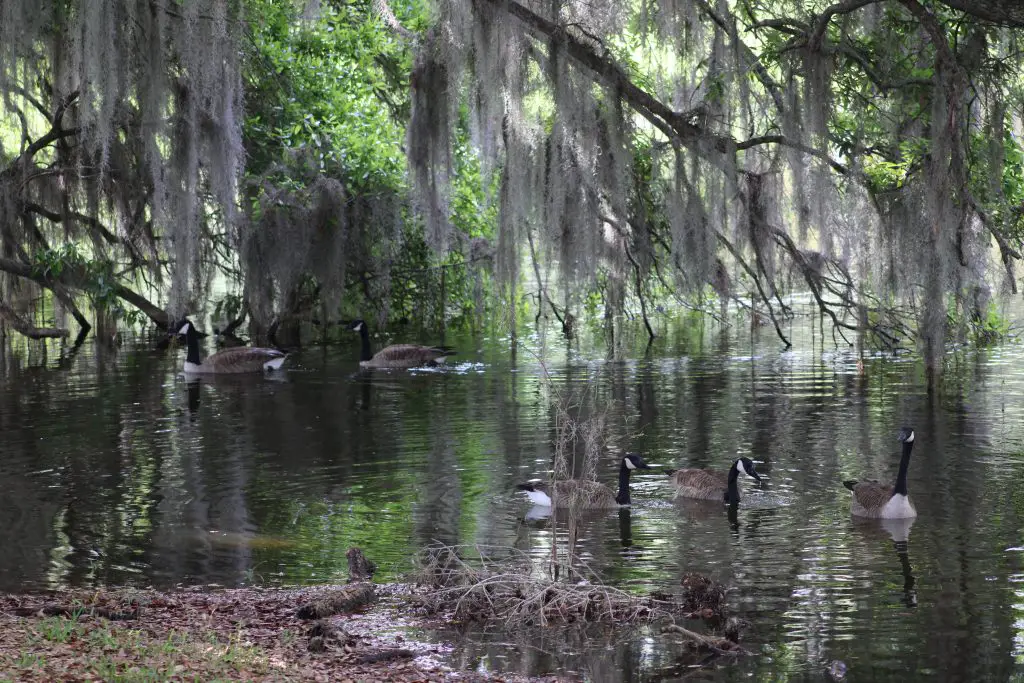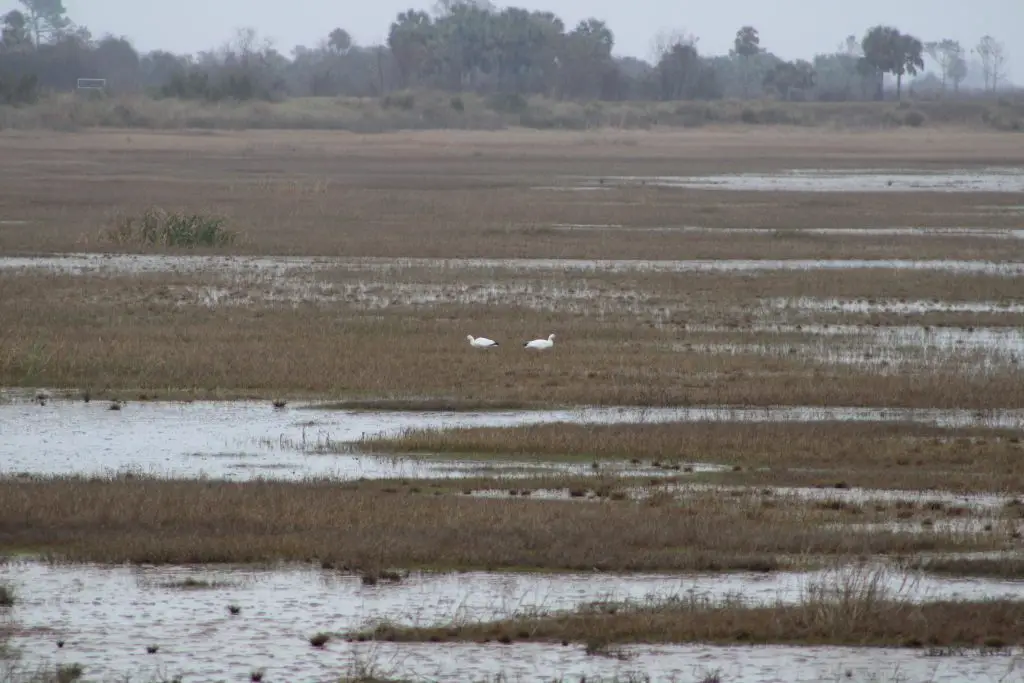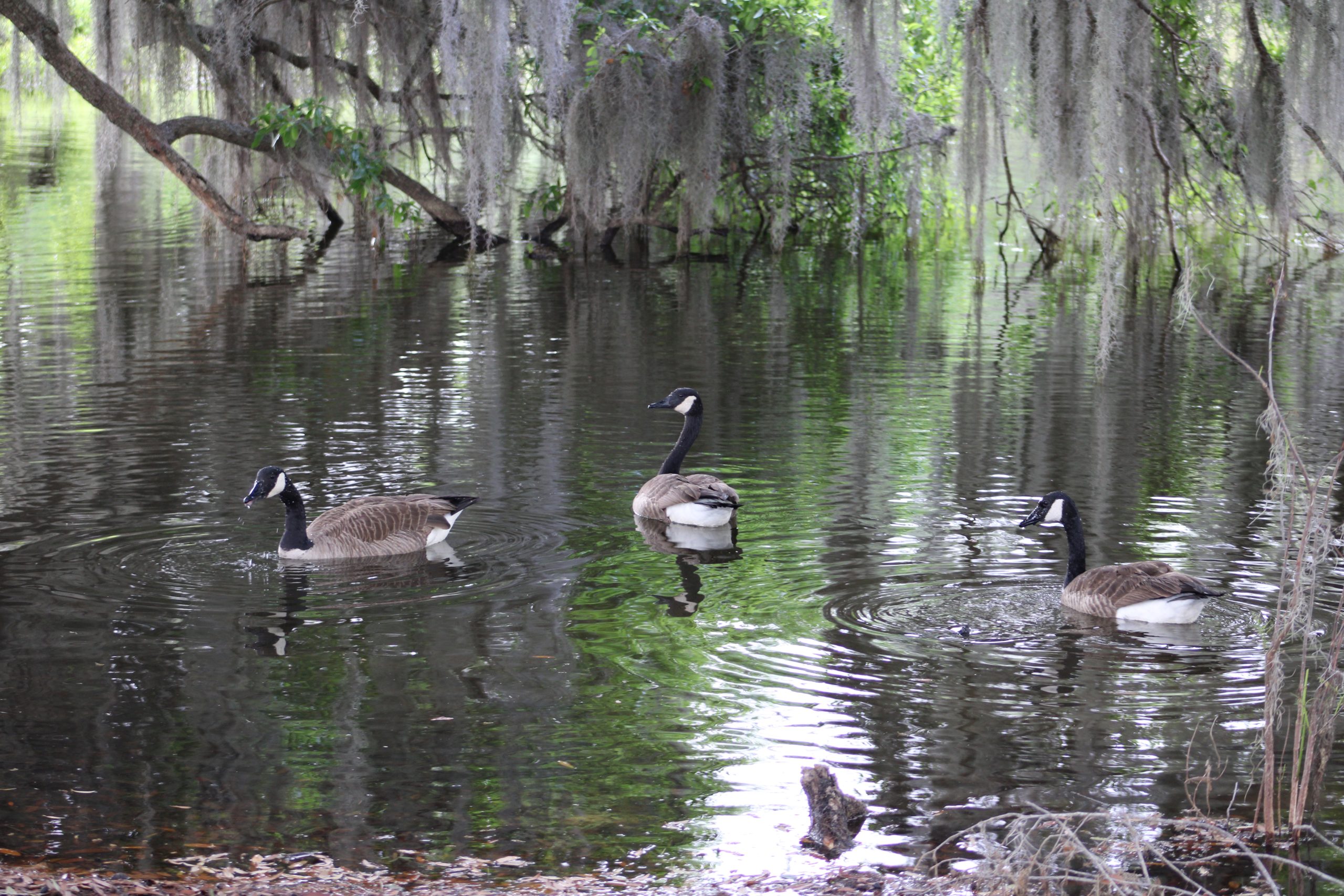If you spot a bunch of geese, you might wonder what that group is called. Of course, you could go with the standard collective noun for all birds (a flock). But if you want to get more specific, the correct term for a flock of geese is usually a gaggle. But it can vary based on the situation.
This guide answers the question: What is a bunch of geese called?
Terms for a group of geese

The right term for a group of geese varies based on what the geese in question are doing. Below is a look at what terms to use and when to use them:
- Gaggle of geese: A group of geese on land or in water, often used when they are waddling around or honking together.
- Skein of geese: Refers to a group of geese flying in a V-formation, typically seen during migration.
- Plump of geese: A playful term sometimes used to describe a group of geese that are particularly round or plump, though not commonly used in formal contexts.
- Team of geese: Used when geese are seen flying together, moving in a coordinated way, usually during migration.
- Family of geese: A term used to describe a group of geese that includes both adults and their goslings, typically during the breeding season.
- Wedge of geese: Another term for geese flying in a V-formation, often used interchangeably with “skein.”
- Raft of geese: Refers to a group of geese floating together on water, often resting or feeding.
- Flock of geese: A general term that can be used for a group of geese, typically referring to them as a whole whether on land, water, or in flight.
When do geese gather in groups?

Geese are highly social birds, and their gatherings are driven by a variety of reasons, ranging from survival to social behavior. They come together for protection, breeding, and communication, as well as for migration.
- Migration: One of the primary reasons geese gather in groups is for migration. Flocking together helps them conserve energy and provides safety in numbers. During migration, geese form large, coordinated groups, flying in V-formations, which helps reduce wind resistance and allows them to take turns leading the group. This behavior typically occurs in the fall and spring when they travel to and from breeding grounds.
- Breeding and Mating: During the breeding season, geese gather in smaller groups to find mates and establish territories. Males compete for females through displays and vocalizations. Once a pair is formed, they often separate from the larger group to nest. Geese are typically monogamous, and these pairings often last for life.
- Socializing and Communication: Outside of migration and breeding, geese gather in groups to communicate and socialize. They use vocalizations, such as honking, to maintain contact with one another, warn of potential threats, or reinforce social bonds within their flock. This is particularly important during non-migratory periods when they need to coordinate group movement and feeding.
- Protection and Safety: Geese often gather in large groups for protection from predators. When feeding or resting, being in a group provides greater vigilance. The more eyes on the lookout, the safer the flock is. Geese will often form a tight-knit group to protect their young or keep watch for predators.
In summary, geese gather in groups for various reasons: migration, breeding, socializing, protection, and feeding. Each of these activities plays a crucial role in their survival and overall behavior as a species.
Male goose vs female goose: Correct terms

When you see a goose, the correct term varies based on its gender and age. Below is a look at the terms to use:
- Gander: An adult male goose, known for its protective nature, especially when guarding the nest and family.
- Goose: An adult female goose, typically the more nurturing figure, responsible for laying eggs and raising goslings.
- Gosling: A young, newly hatched goose, usually covered in soft downy feathers and dependent on its parents for protection and care.
- Cygnet: An alternative term for a young goose, often used in the context of swans but occasionally used to refer to young geese as well.
- Yearling: A goose that is about one year old, transitioning from its juvenile stage into adulthood, still growing its adult feathers.
- Gosling (Male/Female): When referring specifically to male or female young geese, they are still called goslings but may be distinguished by gender if needed.
- Pen: The term used for a female goose in some contexts, particularly when discussing breeding and the relationship with a gander.
- Cackler: A term used for a smaller species or subspecies of geese, such as the Cackling Goose, referring to the adult bird.
Final take: What is a bunch of geese called?
In general, it’s fine to call a group of geese a flock. But if you want to get more specific, feel free to use the collective nouns outlined above.
